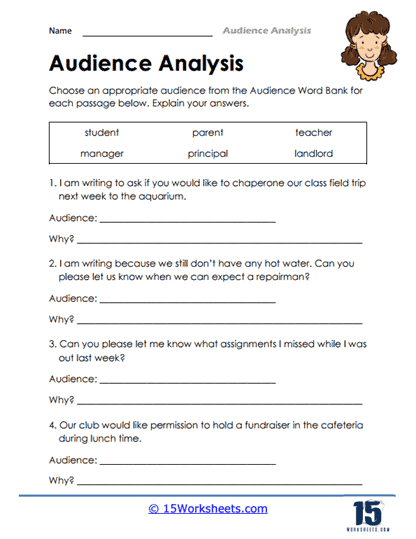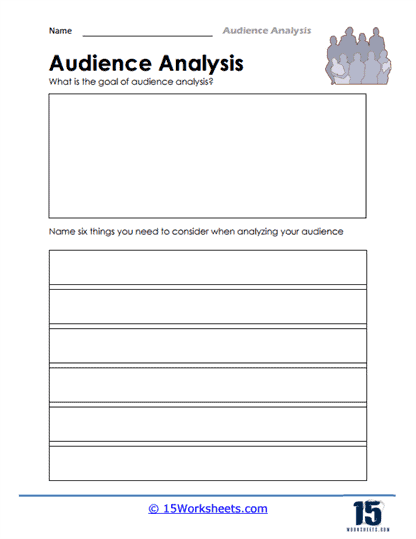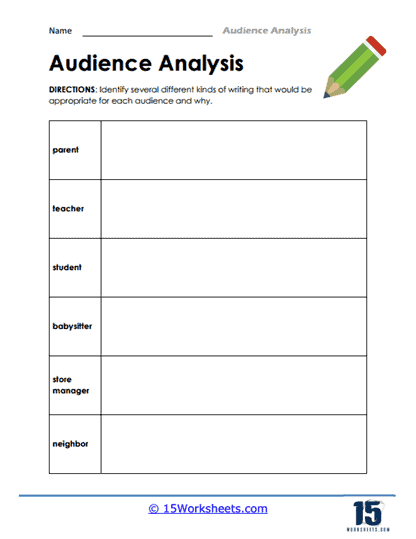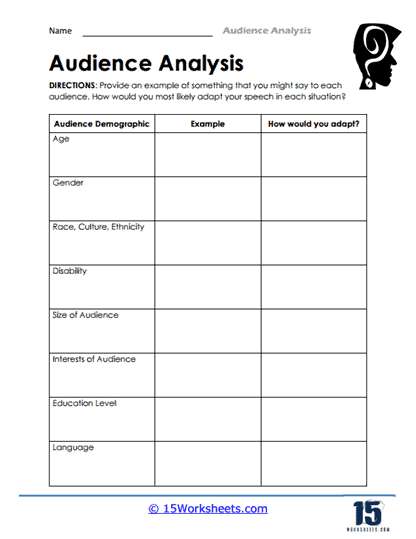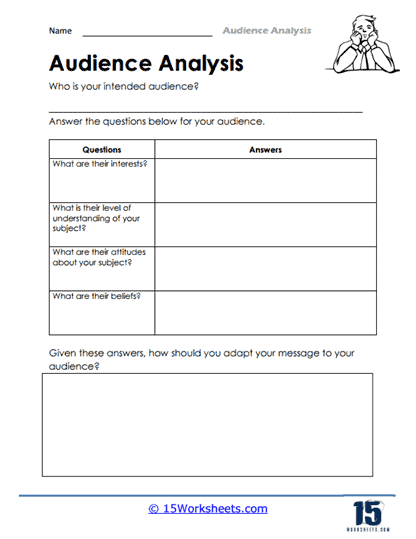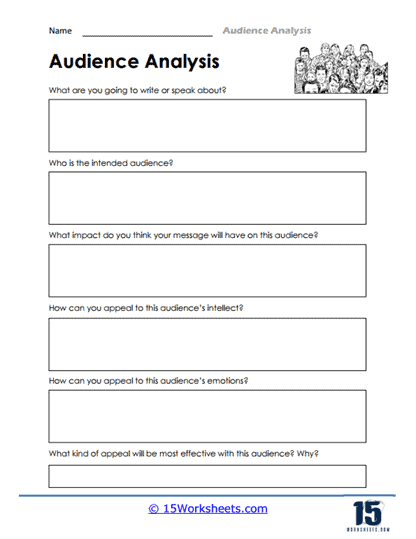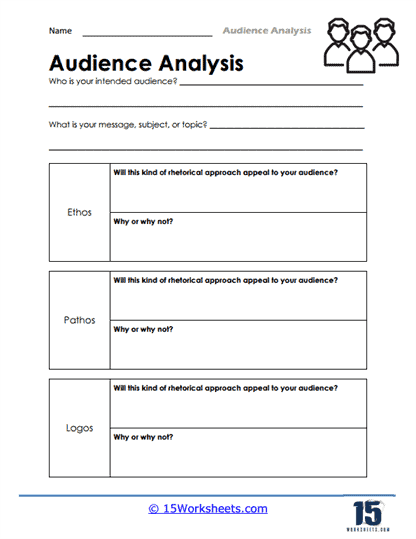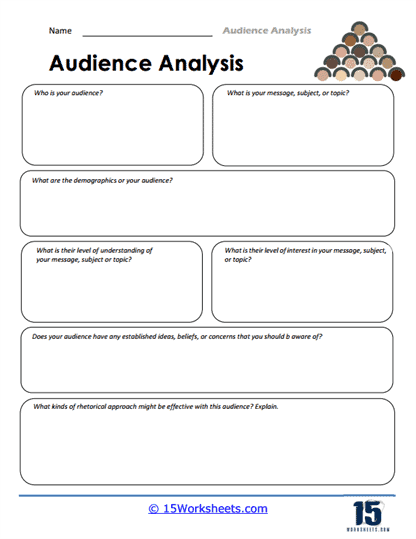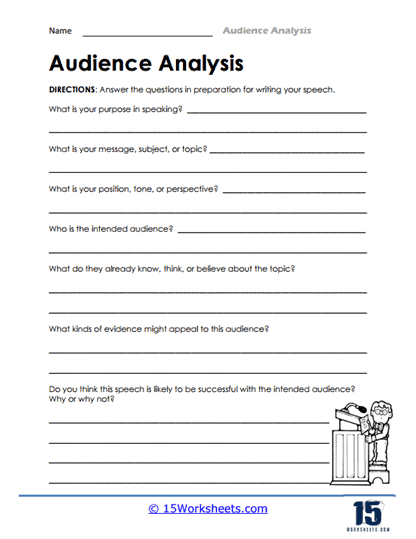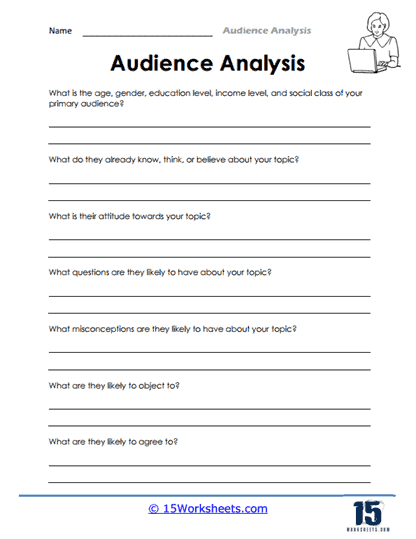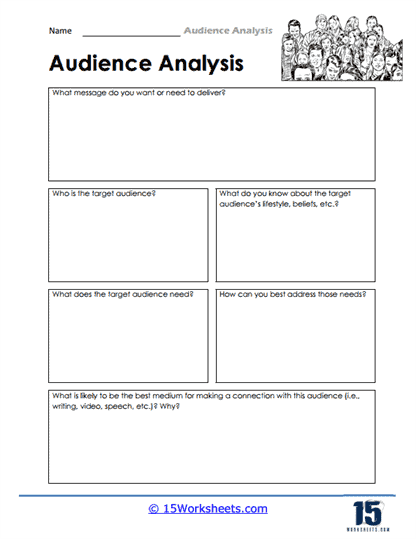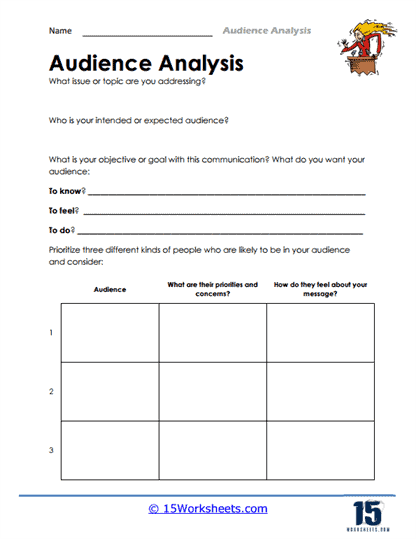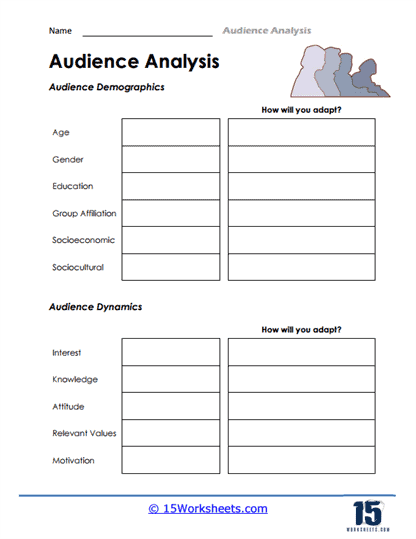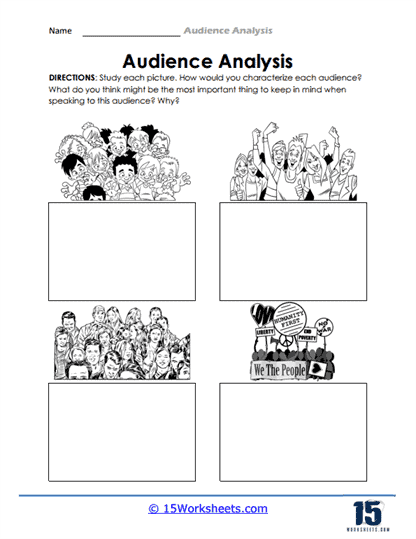Audience Analysis Worksheets
All About These 15 Worksheets
Students unlock the power of effective communication with this series of 15 worksheets designed to help them develop their skills in audience analysis. Each worksheet in this series provides students with a systematic approach to understand their target audience, tailor their writing to meet audience needs, and enhance their overall communication effectiveness.
This series caters to students across different grade levels and language proficiency levels, offering a range of worksheets that delve into various aspects of audience analysis. Through these worksheets, students will:
- Develop an awareness of how audience characteristics shape their writing choices;
- Understand the goal of audience analysis;
- Analyze audience demographics and psychographics to inform their writing strategies;
- And practice adjusting their language, formality, and tone to align with audience expectations.
Overall, this series of worksheets serves as a valuable resource for teachers seeking to enhance their students’ communication skills and audience awareness. By engaging with these worksheets, students develop the abilities to analyze audience characteristics, adapt their writing style and content, and effectively communicate their ideas to different readers, empowering them to become versatile and persuasive communicators.
How to Adapt to Your Audience
If you want to adapt to your audience, you must first take the time out to make yourself familiar with their personality. You must adapt to the ideas and information you want to convey to ensure that they meet the requirements of your audience.
Audience customization is all about knowing who your primary audience is and being able to change the information you present to them accordingly. You must ask questions that matter instead of asking specific questions. Getting a holistic view is crucial to understanding the needs of your audience.
Adapting to an audience means that you have to understand them and tailor your ideas accordingly. This means you need to:
Identify Your Audience
To identify your audience, you need to understand who your users and customers are. This means having a good idea about their issues, needs, and the things they want to achieve.
Whatever you provide must be of value to them. Once you start to understand your audience, you can find ways to reach them and cater to their wants and needs.
Research their Background
When adapting to your audience, researching their background plays a key role. This will allow you to understand their interests and the best way to communicate with your audience.
Once you have sufficient information, you can improve your communication style and tailor how you approach your target market.
Learn their Age, Occupation, Gender, and Ethnicity
To adapt to your audience, you must be aware of their background, occupation, gender, and age. The age of your audience will help you tailor your marketing efforts accordingly. In fact, online behavior is mainly influenced by age. A younger audience has different habits
when surfing the web compared to an older audience.
Once you learn more about your audience, you can prepare content according to their needs using the correct keywords. There are a couple of questions you should ask yourself when you start analyzing your audience. These include:
- Who are these people?
- What information do they have?
- What skills do they have?
Audience demographics and psychographic information are the two things that should be paid special attention to. Their location, income level, age, and gender are critical.
Psychographic information takes a close look at the emotional factors in the lives of your audience. This includes their likes and dislikes, personality traits, and cultural values. One way to adapt to your audience is by looking at their past behavior:
- What reaction did your audience have to a similar situation in the past?
- What technologies and devices do your audience use for communication purposes?
- Can you communicate with your audience using a certain type of communication method?
Put Yourself in their Shoes
If you want to adapt to your audience, you must actively listen to them. Regardless of whether you are dealing with a primary or secondary audience, understanding them will ensure that you respond to their expectations better.
Instead of starting with the knowledge you think you have, put yourself in the shoes of your audience. Understand what they are looking for, and then tailor your words and responses based on their needs.
Moreover, think about how your message will be received. Will your audience be:
- Excited?
- Confused?
- Shocked?
If you struggle to understand the answer to this question, ask yourself how you would feel if you were in their shoes. This technique will help you create effective communication with your audience. Always think of yourself as part of your audience’s journey so that you can empathize with them and understand their needs better.

